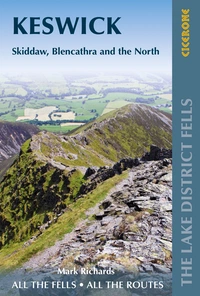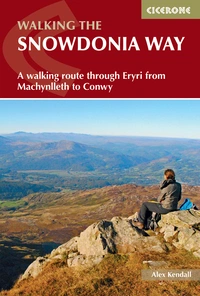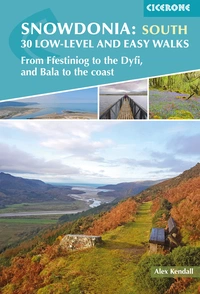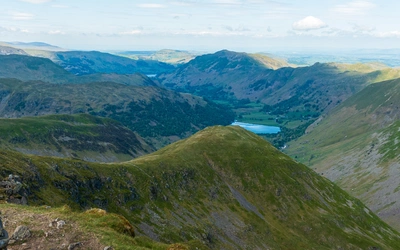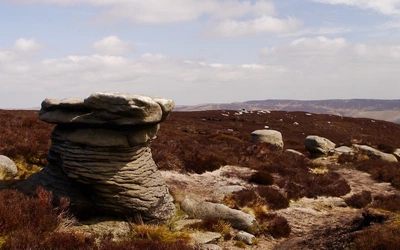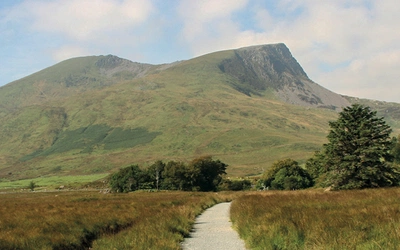The UK's first national parks celebrate 70 years
2021 sees the 70th anniversary of the UK’s first national parks. Here, Cicerone's Natalie Simpson takes a look back at the campaign for their creation and the legislation that eventually brought them into being. She finishes up with a whistle-stop tour of the four parks celebrating their birthdays this year: the Peak District, the Lake District, Snowdonia and Dartmoor.
The National Parks and Access to the Countryside Act of 1949 enabled the creation of the UK’s national parks, with the Peak District National Park, the first, designated on 17 April 1951. The Act came about as a result of decades of campaigning and several government reports, the more recent of which had advocated the creation of 12 national parks in the UK.
National parks were not a new idea. The first national park, Yellowstone in the US, was established in 1872 after a campaign spearheaded by Ferdinand v Hayden. But it was not until the mid-20th century that the campaign for national parks really gathered momentum in the UK, although a 'freedom to roam' bill seeking free access to Scotland’s mountains had been introduced to Parliament by MP James Bryce as early as 1884 (it failed).
In 1931 a government inquiry recommended the creation of national parks, and a public pressure group, the Standing Committee on National Parks, was established in 1936 with the ambitious goals of protecting the landscape and ensuring that everyone had opportunity to enjoy the countryside.
Yet, in spite of the recommendations and support for them, little progress was made towards the creation of national parks.
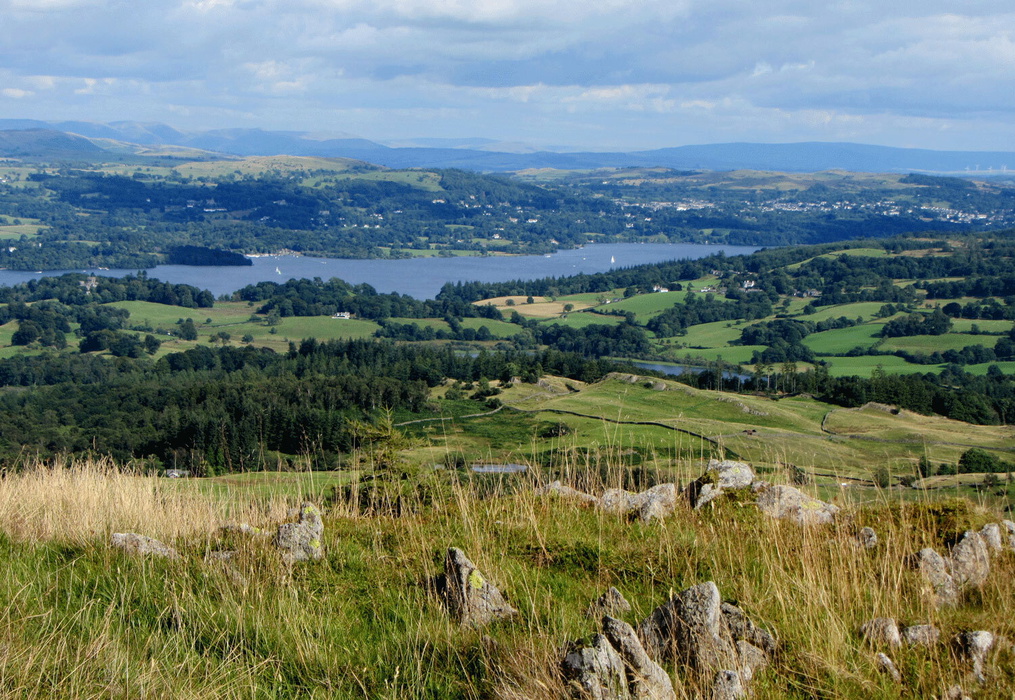
Kinder Mass Trespass
It is virtually impossible to talk about the creation of the national parks without mentioning the Kinder Mass Trespass of 24 April 1932. The trespass was largely organised by Benny Rothman, secretary of the British Workers’ Sports Federation (a branch of the Young Communist League), and sought to highlight the lack of public access to open countryside. It came on the back of the expulsion of a group from Bleaklow three weeks previous.
Estimates as to the number of participants vary widely, but it is thought that around 400 ramblers and members of the Young Communist League took part.
In those days, Kinder Scout was private land where rich landowners kept grouse. Benny Rothman was interviewed by the BBC in the 1980s and admitted that “it was possibly a naive idea that if enough ramblers went on a ramble, no group of keepers could stop them because there would be more ramblers than keepers”.
However, the protesters approached en masse and pushed past the gamekeepers who had come out to confront them, and there were some minor skirmishes. The trespassers succeeded in meeting up with another group who had approached from a different direction before returning to their startpoint. However, six men were arrested. Although trespass was not a criminal offence, some were ultimately imprisoned for “riotous assembly”’.
It is now generally accepted that the mass trespass paved the way for the National Parks and Access to the Countryside Act. The Kinder Mass Trespass was actually just one of a number of protests demanding greater access and the right to roam.
It wasn’t even the first mass trespass: as early as 1907, the Sheffield Clarion Rambling Club, which was then at the forefront of the campaign for public access, organised a trespass on Bleaklow. However, Kinder was probably the most radical and the largest, and the subsequent media coverage drew further attention and sympathy for the cause.
The National Parks and Access to the Countryside Act 1949, passed with all-party support, legislated for the creation of the national parks and also covered public rights of way and access to open land. It gained royal assent on 16 December 1949 and the first national park, the Peak District, was designated 16 months later.
What does national park status mean?
The original National Parks and Access to the Countryside Act is a fairly complex and far-reaching piece of legislation. It established a National Parks Commission (although the parks themselves would be governed either by local county councils or special planning boards), which would be responsible 'for the preservation of natural beauty in England and Wales, and particularly in the areas designated… as National Parks' and ‘for encouraging the provision or improvement, for persons resorting to National Parks, of facilities for the enjoyment thereof and for the enjoyment of the opportunities for open air recreation and the study of nature’.
The Act was divided into various parts: ‘Nature conservation’ set out provisions for the creation of nature reserves; ‘Public rights of way’ covered the survey and mapping of public rights of way, as well as setting out procedures for the creation, amendment and repair of public paths and the establishment of long-distance routes; ‘Access to open country’ made provision for public access to open country. A final section covered myriad other topics, including agriculture and forestry, AONBs, local planning authorities and finance.
The Environment Act of 1995 had similar aims to the National Parks and Access to the Countryside Act, but also placed slightly greater emphasis on the conservation of wildlife and cultural heritage. It created national park authorities to advance the parks’ mission.
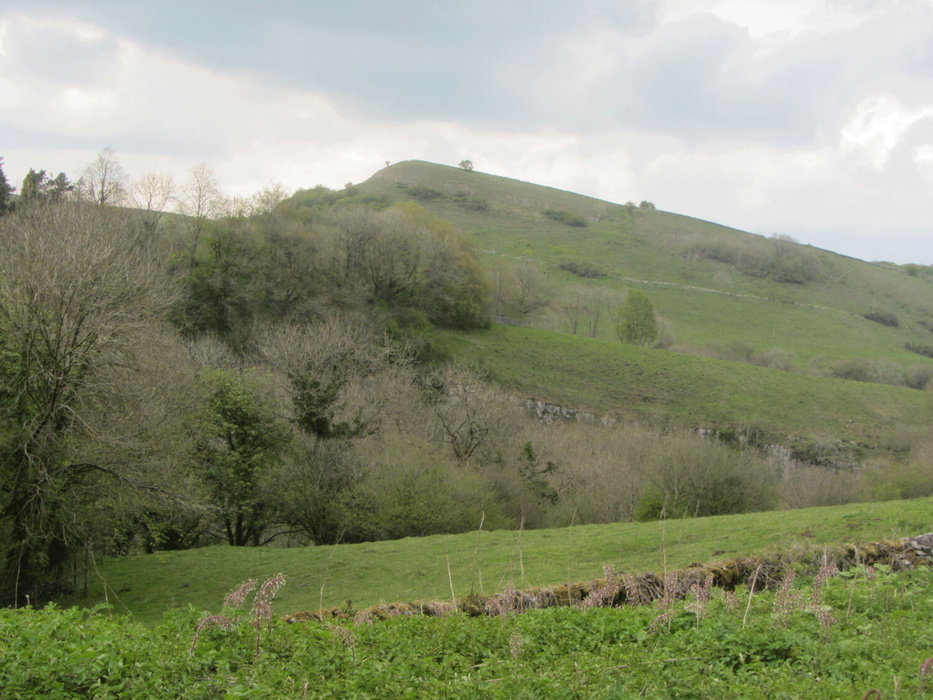
A further piece of legislation opened up the countryside further. The Countryside and Rights of Way Act 2000 gives walkers the ‘right to roam’ over land classified as mountain, moor, heath, down or registered common land, though there are safeguards in place to protect wildlife and land-owners/users.
It sets out greater protection for public rights of way and strengthens protection for SSSIs. OS maps now indicate open-access land. The Land Reform (Scotland) Act, which came into force in 2005, gives the public greater rights still, allowing everyone recreational access to most land and inland waterways in Scotland as long as this freedom is exercised responsibly.
In spite of the major improvements in land access, national parks continue to play a key role in allowing the public to enjoy the British countryside, as well protecting the environment. Today, the national park authorities retain their mission of conserving natural beauty, wildlife and cultural heritage and promoting understanding and enjoyment of the landscape and are also required to seek to foster the economic and social well-being of local communities. (In reality, they must often contend with conflicting priorities; however, where discrepancy arises, conservation is to take priority.) The authorities therefore have a broad remit and engage in a wide range of different activities, from promoting tourism to conservation and planning.
Tourism
National parks play an important role in British tourism. The Lake District is the most visited national park: according to the Lake District National Park Authority, 19.4 million tourists visited the park in 2018 (although Cumbria Tourism suggests this figure could be closer to 47.3 million – perhaps due to repeat visits or locals ‘visiting’ the park?), bringing in £1.5 million (or closer to £2.9 billion if you include things like the value of the jobs created by the tourist sector). Among these visitors, the most popular activities were visiting towns and villages, visiting the countryside and short walks.
Of course, mass tourism brings its own challenges, such as congestion, pressure on the park’s infrastructure, erosion, inflated house prices and damage to the environment. The national park authorities must engage in a careful balancing act to ensure that tourism is sustainable, maximising its benefits and minimising its impact.
We, as walkers and visitors, also have a responsibility to ensure that we respect the environment and local communities and we too should seek to minimise our impact, by following the Countryside Code, being mindful of path erosion and considering how our behaviour will affect others and the environment.
The first national parks
Four national parks are celebrating their 70th anniversary this year: the Peak District was designated on 17 April 1951, the Lake District on 9 May, Snowdonia on 18 October and Dartmoor on 30 October.
The Peak District
The UK’s first national park, the Peak District spans parts of the counties of Derbyshire, Cheshire, Staffordshire, South Yorkshire and West Yorkshire. Its diverse landscapes are a result of differing geological composition: the more northerly Dark Peak is higher and wilder, characterised by sweeping upland, heather moorland and blanket bog scattered with gritstone rock tors, whereas to the south the White Peak is more pastoral and features limestone plateau and steep-sided valleys (dales).
The Dark Peak’s peat bog is of scientific importance and the Carboniferous Limestone of the White Peak supports a rich flora, including some rare species, with wildflowers at their best in spring and early summer. Around mid-August the heather slopes of the Dark Peak become a carpet of purple. The region also boasts abundant birdlife, including game birds, birds of prey and river and woodland species.
The gritstone edges and tors of the Dark Peak and the limestone cliffs of the White Peak are very popular with climbers. The White Peak is also famed for its caves, from spectacular show caverns catering for the casual visitor to potholes, caves and old mines which attract experienced speleologists.
The Peak District offers a vast network of public footpaths and long-distance trails. There is plenty of open-access land in the Dark Peak (less in the White Peak), including the Kinder Scout plateau, the scene of the famous mass trespass. The region is also great for cyclists and riders: old railways have been opened as trails and there are plenty of bridleways.
The Lake District
England’s largest national park at 2292km², the Lake District is also the most visited. It is, of course, best famed for its lakes – although only one is actually a lake; the rest are meres or waters! The Windermere lake cruises, lake steamers on Ullswater, Keswick Launch and Coniston Gondola are among the most popular tourist attractions and offer a great way for visitors to enjoy the celebrated scenery from the water.
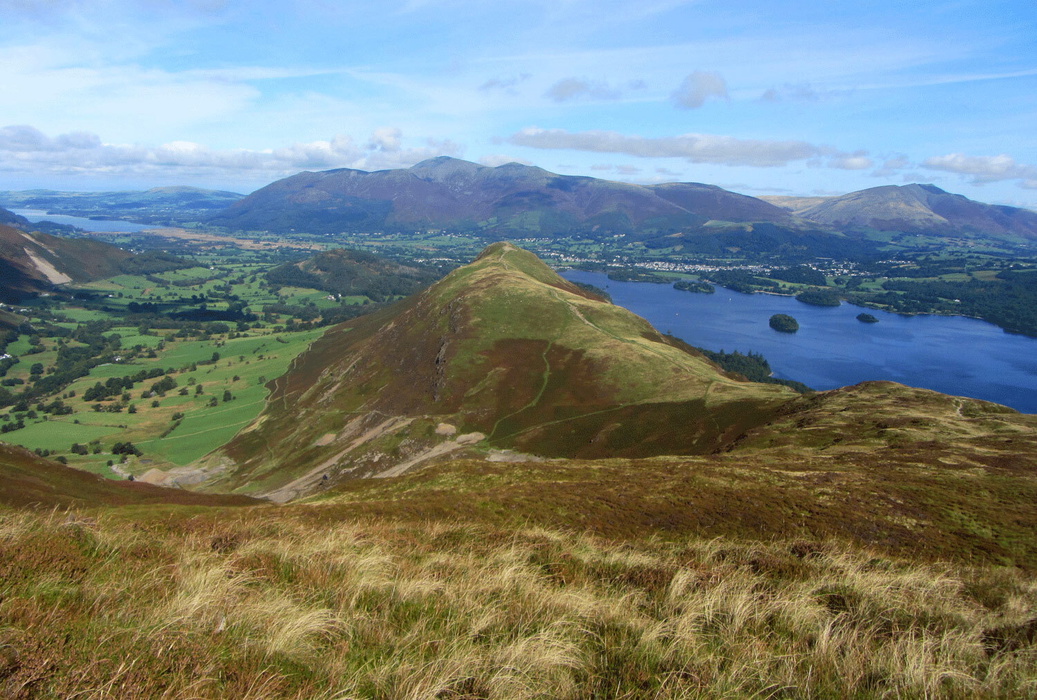
The district is also exceedingly popular with walkers. Its hills and mountains are known as fells and include England’s highest peak Scafell Pike (978m) and the ever-popular Helvellyn (950m). These were immortalised in Alfred Wainwright’s seven-volume Pictorial Guide to the Lakeland Fells (completed in 1966), and today many locals and visitors attempt to tick off all the 214 Wainwrights. Around 50% of the park is open-access land. There are also some great crags to keep the most discerning climbers satisfied.
The Lakes landscape has inspired many writers – most famously, William Wordsworth, Robert Southey, Samuel Taylor Coleridge and Beatrix Potter. It was central to the British Romantic Movement of the early 19th century, with Wordsworth, Southey and Coleridge coming to be known as the Lake Poets.
In 2017, the ‘cultural landscape’ of the Lake District (a term used to refer to the ‘cultural properties [that] represent the combined works of nature and of man’) received UNESCO recognition as a World Heritage Site. The designation acknowledged the region’s unique identity, natural beauty and distinctive farmed landscape, its place in art and literature and its role in inspiring the conservation movement.
Snowdonia/Eryri
Snowdonia (Eryri in Welsh) was Wales’s first national park and remains its largest. It is home to Snowdon (yr Wyddfa, 1085m), Wales’s highest peak, as well as the 14 other Welsh peaks with an altitude of over 3000ft. There are also plenty of lakes, and the national park territory includes a swath of coastline, where there are dune systems, intertidal sands and coastal marsh. A large part of the park is covered by the ‘right to roam’.

The region is especially rich in history and culture. It lies within y Fro Gymraeg, those parts of Wales in which Welsh is spoken as a first language: well over half of the population of the national park speaks Welsh. Archaeological highlights include Neolithic and Bronze Age burial chambers, Iron Age hillforts, Roman roads and forts and some fantastic castles.
Having been mined and quarried extensively, Snowdonia also boasts a rich industrial heritage. Both copper and gold were once mined here (the Sygun Copper Mine near Beddgelert is now open to the public); however, the region is most synonymous with slate.
The hillsides are littered quarries, mines and spoil tips, and abandoned mine settlements stand as haunting reminders of the recent past. In fact, the national park actually has a hole in it: the area around Blaenau Ffestiniog was excluded from the park in order to allow for the development of new light industry to replace the former slate industry (however, Blaenau is still very much worth a visit).
Unlike the Peak and Lake Districts, Snowdonia has lots of quieter parts. The Snowdon massif sees the greatest concentration of walkers, whereas the wild rugged Rhinogydd have a much lower footfall. Snowdon, the Glyderau and the Carneddau in particular offer some great climbing and scrambling routes, and Betws-y-Coed and the Ffestiniog area have many fantastic biking trails.
Dartmoor
Located in Devon, Dartmoor is the largest area of open country in southern England. Much of the park is moorland, topped with granite tors, although there are also peat bogs and native oak woodlands – all of which support important ecosystems.
Dartmoor is famously home to the semi-wild Dartmoor Pony. These short, stocky ponies are a hardy breed and were once used in the tin mines and quarries. Their numbers are in decline, although they are owned and protected by Dartmoor Commoners. (Should you visit Dartmoor, note that it is illegal to feed the ponies.)
The area boasts many antiquities and archaeological sites. It is home to the largest concentration of Bronze Age remains in the UK, with extensive field systems and countless hut circles. There are also numerous menhirs (standing stones), stone circles, cairns and kistvaens (Neolithic stone cist-tombs). More recent archaeology includes remains associated with the local tin-mining industry.
As well as walking, Dartmoor offers several other outdoor activities. Climbers are attracted to the granite tops and outcrops and kayaking and canoeing are also popular. Dartmoor is also the birthplace of letterboxing, an activity similar to geocaching but with its own unique rules: clues are posted as to the location of the letterboxes, each of which contains a rubber stamp for the finder to stamp their personal logbook and a notebook in which the finder leaves their personal stamp.
Although over half of the park is private land, much of it is open access. However, the Ministry of Defence uses three areas of northern Dartmoor for training and live-fire exercises, during which access is restricted.

